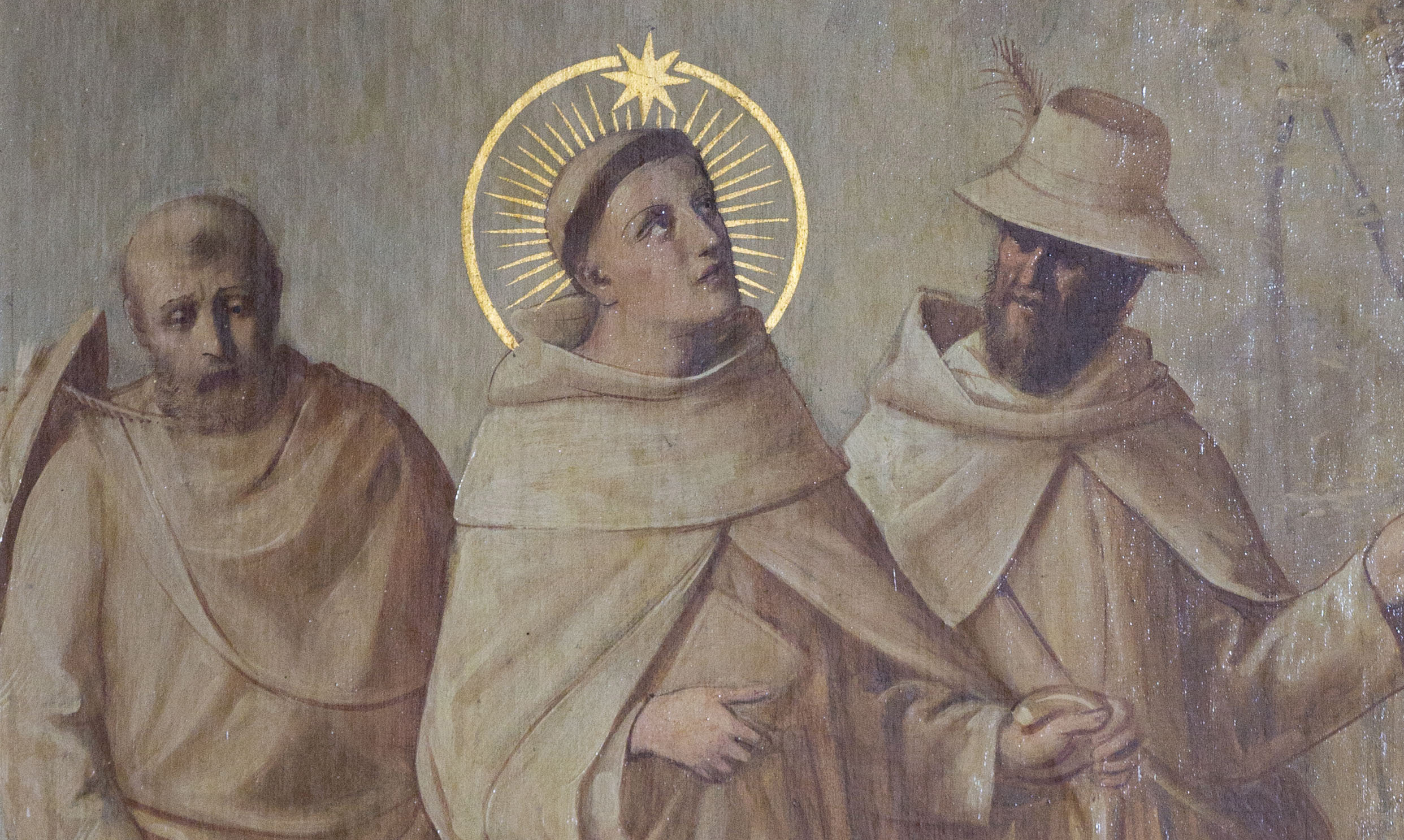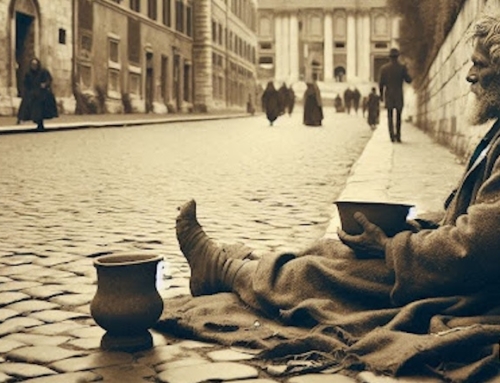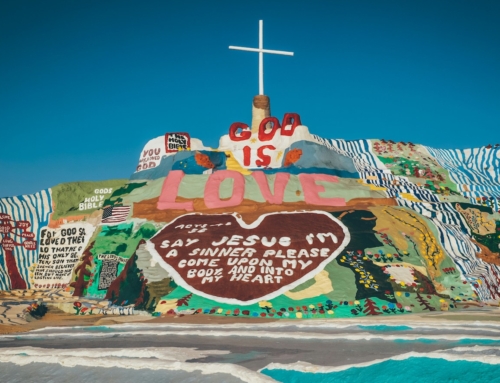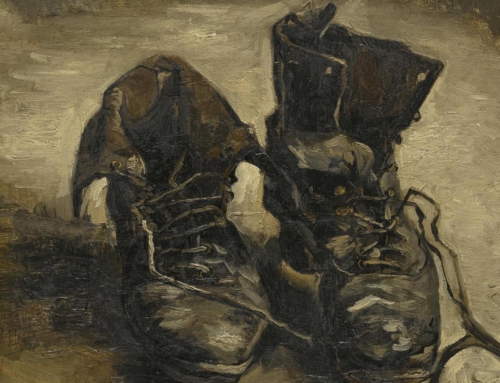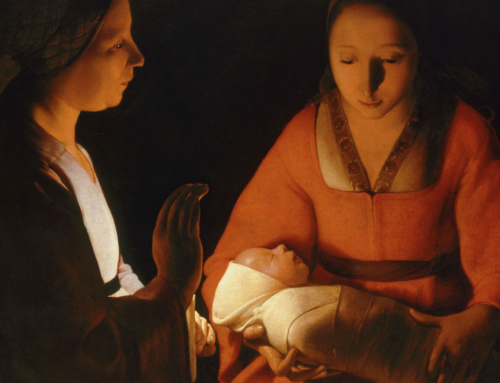The room is almost completely dark. There is a small candle illuminating a bronze globe, for God is here in this place. As I pray, I can smell the sulfur of matches while the candles are lit. I pray in the silence of my heart, “Hail Mary, full of Grace, the Lord is with thee…” The squeaking floorboards remind me that I am not alone, that my brethren are there somewhere in the darkness. Even if I could see my watch, the moment is timeless, all of us seeking to be lost in the truth of God’s mercy and love.
It has been about 20 minutes. The lights begin to turn on and little by little the room brightens. I break my concentration long enough to look up where I see the familiar sight of my brothers meditating on the Holy Scripture and praying for their intentions. Just above them, directly across from me, is an image I see more than any other in the priory. It is a sandy-hued painting completed around 1910 by a Belgian Dominican tertiary, M. Adolph Tessin. It looks like it was painted in all browns, and beneath it is a caption in old English lettering that reads, “Ab hæreticos deceptus medios inter tribulos nudis plantis ambulat”—having been deceived by the heretic, he walks amidst the thorny briars with bare feet (my translation). I’ve stared at this painting for hours and there is one feature that always draws my attention: Saint Dominic attentively, but peacefully, looks heavenward staring into space. That gaze. What is he looking at? Around his head is a halo, a sort of penumbra of the Holy Spirit around a “sun” that emanates truth, and a gleaming star that reminds us of his mother’s vision at his baptism (Libellus, 9). But I cannot take my eyes off of that gaze, a sign of Dominic’s total union with the Lord.
Saint Dominic is an exemplar of existing in communion with his maker. He would exhort the brethren to always and only speak of or about God and was known to converse directly with Jesus Christ, the Blessed Mother, and the saints (Lives of the Brethren, Part I). There is a trust in his eyes that says, “Father, not my will, but thy will be done” (see Luke 22:42). He knew that God would give him the grace to overcome whatever obstacle he might face (Isa 41:13). This holy man approached every task, every trial, and every tribulation with complete abandonment, giving us a powerful example to follow as his spiritual children. By surrendering to the will of God, St. Dominic’s life was filled with God’s gifts of peace and love (Isa 26:3).
For our part, we must strive to unite our own actions with the will of God. What better place to do this than in prayer? Saint Charles Borromeo, whom we celebrate today, advised, “Stay quiet with God […] we must meditate before, during, and after everything we do” (Acta Ecclesiae Mediolanensis 1599, 1177-1178, as cited in the Liturgy of the Hours). In everything we do, we ought to pray that it is in accord with God’s will. Saint Charles would emphasize this in an exhortation to his Milanese clergy: “Let us direct our counsels, thoughts, efforts and actions to the certain norm of the will of God” (“Cultivating the Field Persistently,” delivered in 1569). For, as St. Thomas Aquinas reminds us, when we unite our will to God’s, our acts become rooted in charity (ST II-II q. 23, a. 2), bringing us into a fuller relationship with the Trinity.
That’s exactly what St. Dominic realized. It’s why he trusted God so much and why each act, decision, and moment in his life was united with God’s will. For him it was second nature. It’s why Tessin painted him looking at God with a fixation of love, trust, and intense longing even while trodding barefoot through a briar patch.
As I continue to meditate on the image of St. Dominic, I wonder: Do I live my life in accord with God’s will? Only by his grace is it possible. As I conclude my prayer, I realize that, like St. Dominic in Tessin’s painting, I too am peering toward the heavens, yearning for a response from the God with whom I so desire to be united. While there is no audible reply, I sense deep in my heart, “Do not fear, for the Lord is with you wherever you go.”
✠
Image: M. Adolph Tessin, Untitled from the Main Chapel of the Priory of the Immaculate Conception, Washington, D.C.

